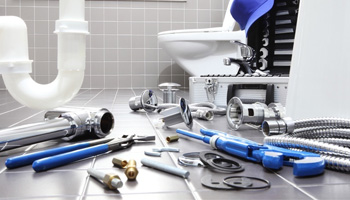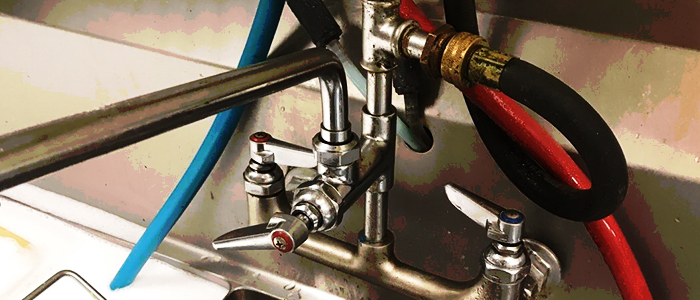A Detailed Look at Your House's Plumbing System Anatomy
A Detailed Look at Your House's Plumbing System Anatomy
Blog Article
The publisher is making a number of great pointers on the subject of Anatomy of a House: Understanding the Components overall in the article just below.

Understanding how your home's pipes system functions is vital for every property owner. From delivering tidy water for alcohol consumption, food preparation, and showering to safely removing wastewater, a properly maintained pipes system is essential for your family members's health and wellness and comfort. In this thorough guide, we'll explore the detailed network that comprises your home's pipes and offer tips on maintenance, upgrades, and dealing with usual issues.
Intro
Your home's pipes system is more than simply a network of pipes; it's a complex system that ensures you have accessibility to clean water and effective wastewater elimination. Knowing its elements and just how they collaborate can aid you prevent expensive fixings and guarantee whatever runs efficiently.
Standard Components of a Pipes System
Pipelines and Tubing
At the heart of your plumbing system are the pipelines and tubing that lug water throughout your home. These can be made of different products such as copper, PVC, or PEX, each with its benefits in terms of toughness and cost-effectiveness.
Components: Sinks, Toilets, Showers, and so on.
Components like sinks, toilets, showers, and tubs are where water is utilized in your house. Recognizing how these fixtures attach to the pipes system helps in identifying problems and preparing upgrades.
Shutoffs and Shut-off Factors
Shutoffs regulate the flow of water in your plumbing system. Shut-off valves are vital during emergency situations or when you need to make repair services, enabling you to isolate parts of the system without disrupting water flow to the entire home.
Water System
Key Water Line
The main water line connects your home to the community supply of water or a personal well. It's where water enters your home and is dispersed to numerous fixtures.
Water Meter and Pressure Regulatory Authority
The water meter measures your water usage, while a pressure regulator ensures that water flows at a secure stress throughout your home's plumbing system, avoiding damages to pipelines and components.
Cold Water vs. Warm water Lines
Recognizing the difference between cold water lines, which supply water directly from the major, and hot water lines, which carry heated water from the hot water heater, aids in repairing and preparing for upgrades.
Drainage System
Drain Pipeline and Traps
Drain pipelines lug wastewater far from sinks, showers, and commodes to the sewage system or septic tank. Catches protect against sewage system gases from entering your home and also trap debris that could trigger blockages.
Ventilation Pipelines
Air flow pipelines permit air right into the water drainage system, protecting against suction that might slow down drainage and cause traps to empty. Proper ventilation is necessary for maintaining the integrity of your plumbing system.
Significance of Appropriate Drain
Guaranteeing appropriate drain avoids back-ups and water damages. Frequently cleaning up drains and maintaining catches can protect against pricey repair work and prolong the life of your plumbing system.
Water Heating System
Types of Water Heaters
Hot water heater can be tankless or typical tank-style. Tankless heating systems heat water as needed, while storage tanks save warmed water for prompt use.
Exactly How Water Heaters Connect to the Pipes System
Comprehending just how water heaters connect to both the cold water supply and warm water distribution lines aids in identifying issues like inadequate warm water or leaks.
Maintenance Tips for Water Heaters
Regularly purging your water heater to get rid of sediment, examining the temperature setups, and checking for leaks can prolong its lifespan and enhance energy performance.
Common Plumbing Concerns
Leakages and Their Causes
Leakages can occur as a result of aging pipelines, loose fittings, or high water stress. Dealing with leakages quickly protects against water damage and mold and mildew growth.
Clogs and Obstructions
Clogs in drains pipes and bathrooms are frequently brought on by purging non-flushable items or an accumulation of oil and hair. Using drainpipe screens and being mindful of what drops your drains can stop obstructions.
Signs of Plumbing Troubles to Look For
Low tide pressure, sluggish drains pipes, foul odors, or unusually high water expenses are indicators of potential pipes troubles that should be attended to without delay.
Plumbing Maintenance Tips
Regular Evaluations and Checks
Set up yearly plumbing assessments to capture concerns early. Look for indications of leakages, deterioration, or mineral buildup in faucets and showerheads.
Do It Yourself Upkeep Tasks
Straightforward tasks like cleaning faucet aerators, checking for commode leaks using dye tablet computers, or shielding revealed pipes in cold climates can stop significant pipes issues.
When to Call a Professional Plumbing
Know when a plumbing concern requires specialist expertise. Attempting complex repair work without appropriate understanding can cause even more damages and greater fixing prices.
Upgrading Your Plumbing System
Reasons for Upgrading
Updating to water-efficient components or changing old pipelines can enhance water quality, reduce water costs, and raise the worth of your home.
Modern Plumbing Technologies and Their Advantages
Check out innovations like smart leak detectors, water-saving commodes, and energy-efficient hot water heater that can save money and decrease environmental influence.
Price Factors To Consider and ROI
Determine the upfront prices versus lasting cost savings when taking into consideration plumbing upgrades. Many upgrades spend for themselves via lowered energy expenses and fewer repairs.
Ecological Effect and Conservation
Water-Saving Fixtures and Appliances
Mounting low-flow taps, showerheads, and bathrooms can substantially decrease water usage without sacrificing efficiency.
Tips for Lowering Water Use
Easy practices like fixing leaks without delay, taking much shorter showers, and running complete loads of washing and meals can preserve water and reduced your utility expenses.
Eco-Friendly Pipes Options
Think about sustainable pipes products like bamboo for flooring, which is durable and environmentally friendly, or recycled glass for countertops.
Emergency Readiness
Steps to Take Throughout a Plumbing Emergency
Know where your shut-off shutoffs are located and how to switch off the water system in case of a ruptured pipeline or major leakage.
Significance of Having Emergency Contacts Convenient
Maintain contact info for regional plumbings or emergency situation services easily offered for quick action throughout a plumbing dilemma.
Do It Yourself Emergency Fixes (When Appropriate).
Momentary fixes like utilizing duct tape to spot a dripping pipe or putting a pail under a dripping faucet can decrease damage up until a specialist plumbing professional gets here.
Conclusion.
Understanding the makeup of your home's pipes system encourages you to keep it successfully, conserving time and money on repairs. By following regular maintenance routines and staying informed about modern pipes innovations, you can guarantee your pipes system operates efficiently for many years to find.
HOW YOUR PLUMBING SYSTEM WORKS
Which Pipes Do What?
Blue lines = fresh water supply entering the building
Red lines = hot water supply entering the building
Grey lines = pipes carrying waste away from the building and venting pipes carrying gases away from the building (through the roof)
YOUR MAIN PLUMBING SYSTEMS
There are two main plumbing systems that support your home s basic plumbing needs one that brings clean water into your home, and one that sends dirty water away from your home. Connected to the toilet, bath, shower, and other faucets in your home, these two systems keep your water flowing in the right directions.
ACCESSING FRESH WATER
Fresh and clean water is brought into your home through the main water supply line . Filtered through one pipe, this water is pressured to flow into the various fixtures in your home at any given time.
This water can be sourced from a well located on your property, a pond or river (mostly cottages), or, as in most cases, from the city s municipal water treatment centre. However, it is important to note that water that is untreated, such as the water siphoned from ponds or rivers, may not be safe to drink. Personal water supplies always need to be treated for hardness and contaminants before consumed.
MUNICIPAL WATER SUPPLIES
Improve taste and odour
Remove sediment
Eliminate hardness
Reduce chlorine
COLD WATER SUPPLY VS. HOT WATER SUPPLY
Cold water flows into your home or building through the service line, which then distributes hot or cold water to your fixtures. This line is most commonly run through a central column that runs floor to floor. Hot water runs in short and straight pipes as the longer the pipeline, the more heat that will be lost in the transfer. Having shorter pipes also allows residents to access hot water more quickly.
WASTE WATER SYSTEM
Your wastewater system is divided into two parts pipes that send wastewater away from your home and venting pipes that send sewer gas away from your home. Sewage water travels through pipes that flush the water and waste towards local sewers that are operated and managed by your city or town. Most sewer systems rely on gravity to move the wastewater to where it needs to go.
The further away from your toilet or sink, the larger wastewater pipes become. This allows for waste to be disposed of from various parts of your home or business at once without pipe blockages. The angle and flow of these pipes are also essential for keeping your waste pipes clear of build up.
https://harrisplumbing.ca/how-your-home-plumbing-system-works/

HOW YOUR PLUMBING SYSTEM WORKS
Which Pipes Do What?
YOUR MAIN PLUMBING SYSTEMS
There are two main plumbing systems that support your home s basic plumbing needs one that brings clean water into your home, and one that sends dirty water away from your home. Connected to the toilet, bath, shower, and other faucets in your home, these two systems keep your water flowing in the right directions.
ACCESSING FRESH WATER
Fresh and clean water is brought into your home through the main water supply line . Filtered through one pipe, this water is pressured to flow into the various fixtures in your home at any given time.
This water can be sourced from a well located on your property, a pond or river (mostly cottages), or, as in most cases, from the city s municipal water treatment centre. However, it is important to note that water that is untreated, such as the water siphoned from ponds or rivers, may not be safe to drink. Personal water supplies always need to be treated for hardness and contaminants before consumed.
MUNICIPAL WATER SUPPLIES
COLD WATER SUPPLY VS. HOT WATER SUPPLY
Cold water flows into your home or building through the service line, which then distributes hot or cold water to your fixtures. This line is most commonly run through a central column that runs floor to floor. Hot water runs in short and straight pipes as the longer the pipeline, the more heat that will be lost in the transfer. Having shorter pipes also allows residents to access hot water more quickly.
WASTE WATER SYSTEM
Your wastewater system is divided into two parts pipes that send wastewater away from your home and venting pipes that send sewer gas away from your home. Sewage water travels through pipes that flush the water and waste towards local sewers that are operated and managed by your city or town. Most sewer systems rely on gravity to move the wastewater to where it needs to go.
The further away from your toilet or sink, the larger wastewater pipes become. This allows for waste to be disposed of from various parts of your home or business at once without pipe blockages. The angle and flow of these pipes are also essential for keeping your waste pipes clear of build up.
https://harrisplumbing.ca/how-your-home-plumbing-system-works/
I came across that piece about Understanding Your Home's Plumbing Anatomy when exploring the internet. Are you aware of somebody who is interested in the niche? Feel free to promote it. Thank you for your time invested reading it.
Estimating Report this page